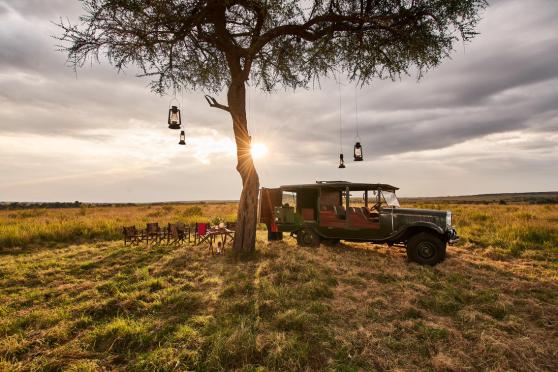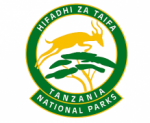Africa is a continent of diverse landscapes, climates, and wildlife. Whether you want to witness the dramatic Great Migration, trek with mountain gorillas, or enjoy a luxurious game-viewing experience, planning your safari around the best season for each destination is essential. Here’s a comprehensive guide to help you decide when to visit the key safari destinations in Africa.
Key Considerations for Your Safari
-
Climate & Weather:
Most safari destinations feature two main seasons—the dry season and the wet season. The dry season generally offers clear skies, sparse vegetation, and animals congregating around water sources, making wildlife easier to spot. The wet season brings lush landscapes and fewer tourists, often with lower prices but sometimes more dispersed animals.
-
Wildlife Behavior:
Many animal movements, such as the wildebeest migration or calving season, are directly linked to seasonal changes. Timing your visit to coincide with these events can enhance your safari experience.
-
Crowds & Costs:
Peak travel periods (usually during the dry season) can be busier and more expensive. Traveling during the shoulder months might give you the best balance of good wildlife sightings with fewer crowds and better deals.
Destination Guides
Tanzania
Best Time to Visit: June to October
Highlights:
• Explore the Serengeti and Ngorongoro Conservation Area during prime game-viewing months.
• Witness the breathtaking Great Migration, where millions of wildebeest and zebras traverse the plains.
Tips:
• If you’re interested in calving season, early January to March offers a unique chance to see newborn animals, though some areas may experience more rain.
Kenya
Best Time to Visit: June to October
Highlights:
• Visit the Masai Mara for spectacular wildlife sightings, especially during the wildebeest and zebra migration from July to October.
• Immerse yourself in the vibrant Maasai culture alongside diverse natural beauty.
Tips:
• Early in the year (January to March) provides opportunities to see newborn wildlife, while the shoulder season (November–December) offers a quieter experience with lower rates.
Uganda
Best Time to Visit: June to September and December to February
Highlights:
• Enjoy prime conditions for gorilla trekking in Bwindi and Mgahinga.
• Experience excellent game viewing in Uganda’s savanna parks.
Tips:
• Choose the dry spells for trekking and wildlife spotting; expect occasional showers during transitional periods.
Rwanda
Best Time to Visit: June to September
Highlights:
• Gorilla trekking in Volcanoes National Park is at its best during the dry months.
• Take in the stunning highland landscapes and clear, crisp views.
Tips:
• While December to February can also be a good time, you may encounter slightly more rain.
South Africa
Best Time to Visit:
• For interior parks (e.g., Kruger and Sabi Sands): May to September
• For coastal areas (e.g., Cape Town, Garden Route): November to March
Highlights:
• Enjoy classic game drives in renowned parks and reserves.
• Combine your safari with city breaks, wine tours, or coastal escapes.
Tips:
• Consider your destination region—conditions vary between the interior and the coast for the best experience.
Zimbabwe
Best Time to Visit: May to September
Highlights:
• Experience excellent wildlife viewing in parks like Hwange.
• Visit Victoria Falls when the falls are at varying flows depending on the season.
Tips:
• The dry season concentrates animals around waterholes, providing fantastic opportunities for photography.
Zambia
Best Time to Visit: May to October
Highlights:
• South Luangwa National Park is renowned for its abundant wildlife and immersive lodge experiences.
• Enjoy the unique charm of Victoria Falls and other iconic sites.
Tips:
• Early in the dry season can yield particularly rewarding sightings; note that some lodges operate on seasonal schedules.
Botswana
Best Time to Visit: May to September
Highlights:
• Explore the exclusive private reserves in the Okavango Delta, Moremi, and Chobe.
• Enjoy an intimate safari experience with low vehicle density.
Tips:
• The dry season helps concentrate wildlife around water sources, though water levels will vary throughout the season.
Namibia
Best Time to Visit: May to October
Highlights:
• Discover the striking desert landscapes and unique wildlife in Etosha National Park.
• Appreciate the vast open savannas and dramatic natural scenery.
Tips:
• The dry season provides the most reliable conditions for spotting animals, while the summer months can be extremely hot.
Month-by-Month Overview
-
January – March:
Ideal for calving season in East Africa and gorilla trekking in Uganda and Rwanda. Landscapes are green and lush, although some regions may experience rain.
-
April:
A transitional month where conditions improve as the rains subside, leading to better wildlife viewing and fewer crowds.
-
May:
Marks the start of the dry season in Southern Africa; wildlife begins gathering around water sources, making for excellent sightings.
-
June – September:
The peak safari season across most regions. Expect clear skies, optimal game viewing, and dramatic migration events.
-
October:
The end of the dry season and the beginning of short rains. This transitional period offers beautiful photography opportunities with fewer tourists.
-
November – December:
A quieter time during the short rainy season, featuring lush landscapes and lower prices, though some activities might be limited.
Final Thoughts
When planning your African safari, consider what experiences are most important to you.
-
For Migration and Big Game Viewing:
Tanzania and Kenya during the dry season provide exceptional opportunities.
-
For Gorilla Trekking:
Uganda and Rwanda are best visited during their drier months.
-
For Luxury and Exclusive Safaris:
South Africa, Botswana, Zimbabwe, Zambia, and Namibia offer top-notch experiences with pristine landscapes.
By aligning your travel plans with the optimal seasonal conditions of your chosen destination, you’ll maximize your wildlife viewing and overall safari experience. Vencha Travel is here to help you craft an unforgettable adventure tailored to your interests and travel style. Happy planning!

 1-321-766-6821
1-321-766-6821 

























